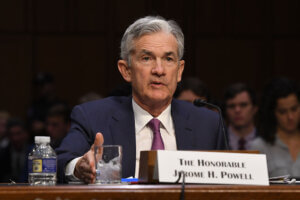
The disappointing July jobs report by the U.S. Bureau of Labor Statistics, which showed weaker-than-expected job growth (114,000 jobs added) and an unexpected rise in the unemployment rate (4.3%), has fueled these fears. This economic data has led to increased speculation about the Federal Reserve’s next moves, particularly regarding interest rate cuts.
The market reaction to the employment situation was significant, with the Dow Jones Industrial Average falling nearly 1,000 points before closing down 611 points—or 1.5%. The Nasdaq Composite entered correction territory, dropping more than 10% from its recent high in early July. This market volatility reflects growing uncertainty about the economic outlook and the potential for a recession.
What Changed Over The Weekend?
Over the weekend, global stock markets also experienced a downturn due to a combination of factors that have heightened investor anxiety.
One major contributor is the unwinding of the Japanese yen carry trade. This financial strategy, where investors borrow yen at low interest rates to invest in higher-yielding assets, has been disrupted by recent market volatility, leading to a sell-off in global equities.
Additionally, escalating tensions in the Middle East, particularly concerns about Iran’s involvement in regional conflicts, have further spooked investors. The potential for increased geopolitical instability has led to fears about the impact on global oil supplies and broader economic repercussions, adding to the market’s nervousness.
The combination of these factors has created a perfect storm of uncertainty, leading to significant stock market declines as investors seek to mitigate risk in an increasingly volatile environment.
Will The Federal Reserve Bank Cut Rates Right Away?
Given these developments, there is a growing consensus among market participants that the Fed may need to cut interest rates sooner than previously anticipated.
Traders are now pricing in a much higher probability of rate cuts, with 68% expecting a 50 basis point cut in September, up from just 11% a week ago. The rationale behind this expectation is that lower interest rates could help stimulate economic growth and prevent a potential recession.
Mixed Messages
However, it’s important to note that the Fed’s decisions are based on a wide range of economic indicators, not just stock market performance or a single jobs report. While the recent data does suggest some economic cooling, the overall picture remains mixed. The unemployment rate, while rising, is still relatively low by historical standards, and other economic indicators continue to show resilience.
Ultimately, the Fed will need to balance the risks of a potential recession against the ongoing concerns about inflation. While rate cuts could help support economic growth, they could also potentially reignite inflationary pressures. The Fed’s next moves will likely depend on incoming economic data and how the situation evolves in the coming weeks and months.
Implications For Workers
The impact of the Fed’s interest rate decisions on workers is complex and can have both positive and negative effects, depending on various factors. If the Fed cuts rates, it could potentially benefit workers in several ways.
Lower interest rates tend to stimulate economic growth by making borrowing cheaper for businesses, which can lead to increased investment and job creation. This could result in more employment opportunities and potentially higher wages as companies compete for workers in a growing economy.
Additionally, lower rates can make mortgages and other loans more affordable, potentially improving workers’ financial situations.
However, rate cuts are not always unequivocally positive for the U.S. workforce. If inflation rises as a result of economic stimulus, it could erode workers’ purchasing power, offsetting any gains from increased employment or wages.
Furthermore, if rate cuts are implemented in response to economic weakness, it may signal underlying problems in the economy that could negatively impact job security and wage growth.
On the other hand, if the Fed does not cut rates, it could be seen as maintaining economic stability and controlling inflation, which can be beneficial for workers in the long term.
Stable prices protect workers’ purchasing power, and a measured approach to monetary policy can help prevent economic bubbles that could lead to future recessions and job losses. However, keeping rates higher might also slow economic growth, potentially limiting job creation and wage increases in the short term.
It’s important to note that the effects of interest rate decisions on workers are not immediate and can take months or even years to fully manifest. The overall impact depends on multiple considerations, including the current state of the economy, global economic conditions and how businesses and consumers respond to the changes.
Source: Forbes


